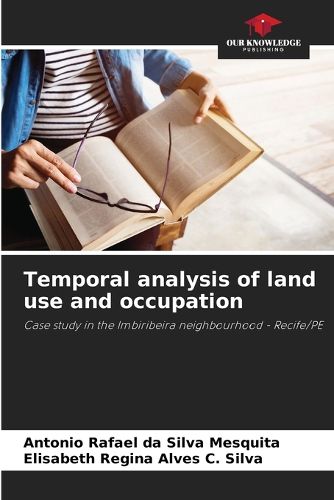Readings Newsletter
Become a Readings Member to make your shopping experience even easier.
Sign in or sign up for free!
You’re not far away from qualifying for FREE standard shipping within Australia
You’ve qualified for FREE standard shipping within Australia
The cart is loading…






The aim of this book is to understand the relationship between urban growth and the reduction in vegetation as a result of subnormal urban development, where several neighbourhoods have been created without planning or land management, which has altered the use and coverage of the land. In this sense, the neighbourhood chosen as a case study was Imbiribeira, because it is an area close to streams and bodies of water, where the lack of vegetation would have a greater impact because it acts as riparian forest, thus reducing anthropogenic interference, in addition to checking the entire vegetation strip located within the neighbourhood in question, verifying the green percentage, which also serves to reduce the temperature of the region's microclimate. Other ranges of land use and occupation were also stratified, showing the nuances in the years 1984 to 2016 between ranges of images acquired from the INPE website, where they were georeferenced with the help of an orthorectified image, showing the advances of the urban area, which is a characteristic present in metropolitan regions, to the detriment of vegetation areas and exposed soil in the region analysed.
$9.00 standard shipping within Australia
FREE standard shipping within Australia for orders over $100.00
Express & International shipping calculated at checkout
The aim of this book is to understand the relationship between urban growth and the reduction in vegetation as a result of subnormal urban development, where several neighbourhoods have been created without planning or land management, which has altered the use and coverage of the land. In this sense, the neighbourhood chosen as a case study was Imbiribeira, because it is an area close to streams and bodies of water, where the lack of vegetation would have a greater impact because it acts as riparian forest, thus reducing anthropogenic interference, in addition to checking the entire vegetation strip located within the neighbourhood in question, verifying the green percentage, which also serves to reduce the temperature of the region's microclimate. Other ranges of land use and occupation were also stratified, showing the nuances in the years 1984 to 2016 between ranges of images acquired from the INPE website, where they were georeferenced with the help of an orthorectified image, showing the advances of the urban area, which is a characteristic present in metropolitan regions, to the detriment of vegetation areas and exposed soil in the region analysed.